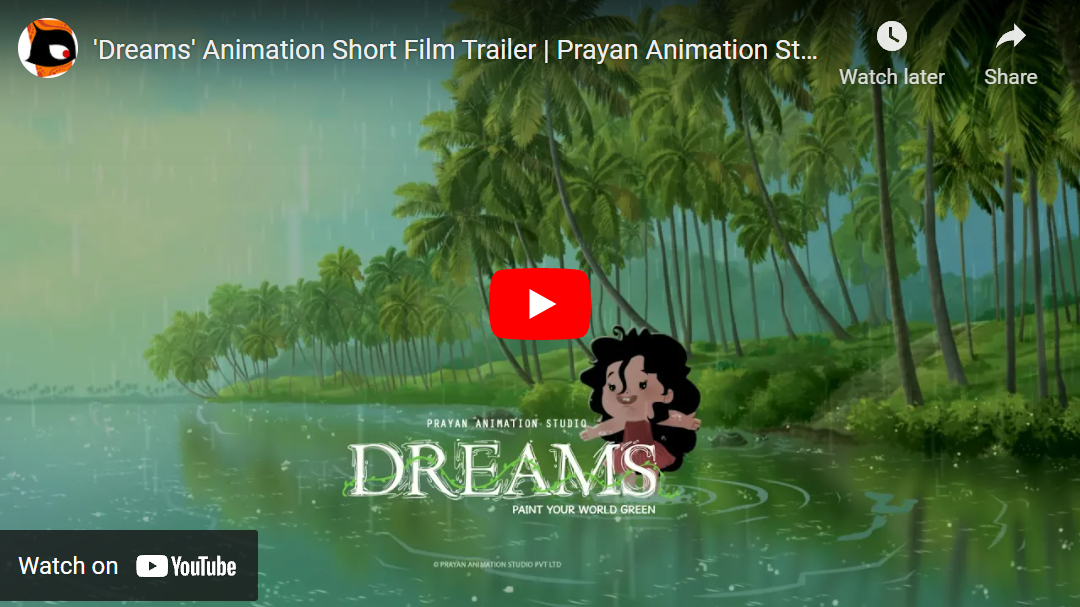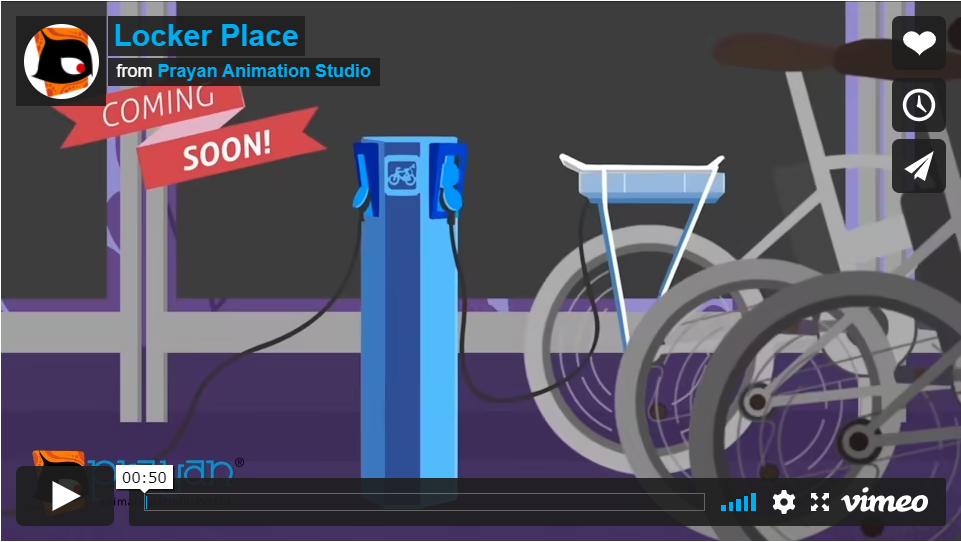
Learn How interactive videos can engage your customers?
Customers` engagement modeled on Netflix Interactive videos. Master the New Level of Marketing Content Creation
Netflix has noticed the importance of personalization and user experience way before it has become mainstream. The feed and recommendations based on the videos that a user watched before along with the “my Lists” and “Thumbs Up” featured, gave Netflix powerful tools that helped to create a unique user experience for every account.
The next step was letting viewers take an active part in the storytelling by influencing the plot of their favorite shows. Revolutionizing home entertainment forever, this has written the name of Netflix in history books on marketing and efficient content creation.
This innovative approach and its growing popularity have sparked a thought in the marketing industry that the sense of involvement and self-identification may be as powerful in the world of commercial content creation. In other words – once customers sense personal relation with a product or a brand, they are most likely to focus their attention on it a become loyal consumers.
While adopting the personalization feature, a brand gets an important space for maneuvering. In case the is not enough sufficient data to have a comprehensive understanding of customer`s interests, personalization allows a customer to watch only the content that is most likely to draw attention and inspire further involvement. This is particularly important if you have a lot of various unspecified content to share. In this case, you risk that a big percentage of potential customers may lose interest after they go over some irrelevant content.
Netflix might have possibly started a new era of marketing. While today personalization and individual experience are named among the hottest trends and the most powerful tools of modern marketing, various brands have already successfully adopted the Netflix-like model of communication with regulars and potential customers through their content.
Let`s have an overview of how various industries capitalize today on the interactive policy and personalized user experience approach.
Answer their questions and offer instant solutions
No matter what industry a company may operate, customers always ask questions. But the development of search engines and non-contact communication trends lead to the fact that most customers prefer to use the search bar of a website instead of using the customer support chat or hotline. The good news for brands – this is a perfect way to collect and evaluate data of the most common requests. Those requests are the main tendencies in the user experience, those issues that need an instant and easy solution to keep those customers engaged. Video content based on this data is the most efficient both for the viewer and the business.
Those videos consist of 2 parts:
- Personalized description of the problem that creates the engagement atmosphere of involvement
- Clear guidance to a solution
On the one hand, a customer is getting the sense of personal involvement of a brand into his needs and demands and willingness to provide an easy solution. On the other hand, a brand may naturally introduce efficient call-to-action content that will stream the customer`s attention and promote a particular product or service.
For example, customers that are curious about various payment methods, get videos promoting online or auto-pay that demonstrate obvious advantages of this service, and encourage to use it right away.
Establishing a relationship with customers
Encouraging spontaneous or one-time purchases is a costly and inefficient strategy. The real success is achieved through the ability to engage customers in long-term relationships, make them feel belonging to a certain brand, and relate to any new promotional campaign. And data is everything in this case. Using the interactive and personalized approach, brands get the chance to collect and follow the data about customer`s behaviors and habits. Not only it allows to make the planning of further actions more efficient, but this data may also be efficiently fed to a CRM, making the content more relevant for the regulars and attractive for potential customers.
While providing customers with an opportunity to choose between such alternatives as online or in-store shopping, monthly interaction or yearly subscriptions, etc., a brand reaches 2 goals:
- Providing customers with an impression that this particular business is willing to adjust to customer`s needs, demands, and wishes
- Getting crucial information about customer`s behavior may be a powerful tool for the attraction of new clients
Moreover, while learning about customer`s preferences, a brand can either develop the most popular stream and capitalize on it or adjust or cut-off the least prosperous fields, saving money and efforts.
Personalized discounts and loyalty programs
Various loyalty programs and regular customer`s perks are what make people come back and purchase more. They eat the foundation of stable long-term relationships with a brand, involvement, and habit-like consumption that is the gamut of successful marketing.
Personalization and interactive approach demonstrate to customers the advantages of loyalty programs based on their habits, preferences, and interests. It is much easier to promote a discount card and demonstrate all the perks of a reward program when you use the consumer segment that your customer is most interested in. For example, large multi-brand retail networks may promote the same discount card or membership through various streams like groceries, clothes, electronics, etc. The value of any promotion grows in the eyes of customers as soon as they see how they can benefit from it instantly.
The personalized loyalty policy is a two-way street:
- It demonstrates to customers all the benefits of loyalty to a particular brand or network
- It helps businesses to keep the existing customers engaged and attract new ones by addressing them through the most relevant and understandable values
With the growing importance of personalized user experience and demand for original and unique content, foreseen by Netflix some time ago, becomes a viral trend in various industries today. Personalized video content is not only more engaging, but it also provides various opportunities to collect and evaluate data about customers, build a clear vision of targeting auditorium and be able to promote the same product or service in several different ways to cover the most percentage of potential customers. Seems like the Netflix-like content creation and distribution only has advantages and guarantees success to the business or brand that adapts it. But just like any marketing solution, Personalized content creation is a double-edged sword. Some peculiarities of creation and distribution of personalized content may want the particular business to think twice before adopting this marketing tool.
Challenges of interactivity on modern marketing
The first thing any brand would think about before launching a new promotional campaign is the production cost and how they correlate with the expectations of the campaign. Due to its variability and the necessity to produce and manage various storylines, personalized interactive content is significantly more expensive in its production and maintenance.
Also, interactive video content requires a specific hosting platform. It means that the distribution of this type of videos becomes quite challenging and will require some unconventional solutions. In the era of social media, people discover most of the video content through YouTube, IGTV, or Facebook – platforms that are the most powerful from the marketing point of view. But they still don`t provide video players that would allow users to fully explore and benefit from personalized interactive video content.
Moreover, the power of choice often encourages people to re-interpret information. It means that eventually there is a strong chance that customers will skip your original message and although finding your content pretty useful and engaging, won`t proceed to the call-to-action part and fulfill the purpose of the content.
The anatomy of efficient interactive video content
Interactive videos may look like a world of endless creative opportunities both for the brand and a customer. But just like any efficient marketing tool, seemingly freedom-loving and unrestricted, interactive videos are built according to a clear scenario that guarantees their commercial efficiency.
- Pre-defined and clear goals.
Ironically the foundation of such a variable product as an interactive video is strictly defined and clear final goal. There are several reasons to think of the final goal before developing the idea of the content. First of all, a video should have a clear value in the eyes of a viewer. The engagement appears when people see that their interactions with content are leading them to valuable information and solution for their issues. Secondly, as long as viewers are supposed to feel like part of the storytelling, it is much easier for them to relate when they see where it is aimed and destined. Moreover, if the goal is clear and the journey is engaging, users are more likely to share the content with people who may benefit from it as well. This solves one of the most common issues of interactive video content – the complexity of distribution.
- Tracking and supervision.
When we talk about such variable content as interactive videos, the ability to supervise and track the interactions and involvement is the key function the determines the success of such content. First of all, tracking demonstrates what parts of the content are the most attractive ones, therefore the least successful may be either adjusted or eliminated. Also, by supervising the users’ activity and interactions, you get a chance to adjust the message and its delivery and make it more efficient. This solves one of the most common challenges of personalized content, when given choice, people start skipping the whole purpose of the video and the message a brand is trying to translate through it.
- Fascination factor.
This might be the part that defines the interactive video content. We all know that any kind of study is much more absorbable while turned into a game or entertainment form. A commercial video is a form of education – they introduce and describe a new product or service, teach about its benefits and give a guideline of how to solve one`s problem with it. Being adjustable and engaging, interactive videos are an example of such educational content. While turned into a game form, letting viewers collect points or giving them the power to play various scenarios influencing the life of a character, interactive videos keep a viewer engaged, while eliminating the sense of the sale, but turning him into an active participant of the whole marketing campaign.
The use of Interactive content
Due to their variability, interactive videos are efficient in various fields. While the most natural application field for them is promotion, they are also a powerful tool for raising awareness or educating recruits.
Here are the most popular and efficient uses of personalized interactive content today
- Product promotion – the essential use of interactive content. Not only do they inform customers about a new product and its benefits, but such videos are also variable. The variability of promotional content allows a brand to cover a wider audience and provide the exact information a consumer might need.
- Education – while practical learning is statistically more efficient than theoretical classes, interactive videos make it much easier to translate the exact message, inform about the concept and let the information sink in without the grinding effect of traditional education. Providing the possibility to see the outcome of the various scenario, they evaluate and boost up the education process through the benefits of theoretical and practical knowledge.
- Music videos – with the development of social media and the growing accessibility of celebrities, the significance of music videos today is incomparable to that of the MTV era. Today`s viewers are much more sophisticated and look for a new experience and creative solutions. Through the immersive effect of interactive music videos, artists create a new level of engagement, which is so important today, when public events and shows are inaccessible for most of the audience.
The interactive experience is not that innovative as it may seem today. This practice has been widely used in cable television and even books decades before we have entered our present all-digital era. The phenomenon of Netflix is not inventing something unprecedented, but being able to adapt and concert this concept and built the whole brand around it. And as long as modern consumers are overwhelmed with advertising, this personalized approach combined with the immersive experience of interaction became a fresh breeze in the modern culture of consumerism.





 We can help you.
We can help you. 